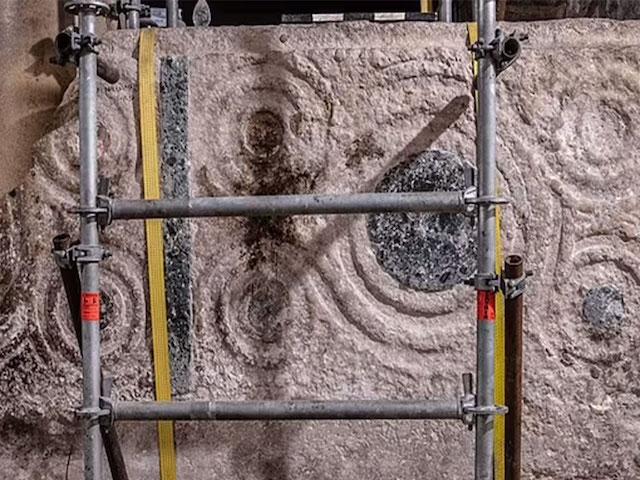Austrian archaeologists have recently revealed the extraordinary details of a groundbreaking discovery at one of Christianity's most revered sites: the Church of the Holy Sepulchre in Jerusalem. This fourth-century institution, also known as the Church of the Resurrection, holds immense religious significance as it is believed to be the burial and resurrection site of Jesus Christ.
A Monumental Find in the Heart of Jerusalem
Experts have converged on the Church of the Holy Sepulchre following the astonishing news that construction workers unearthed a monumental artifact. The workers were left in awe when they uncovered a seemingly ordinary piece of marble, measuring eight feet in length and five feet in width, which had been lying in a publicly accessible corridor near the church's rear.
Researchers have uncovered the largest known medieval altar in Jerusalem’s Church of the Holy Sepulcher, hidden for centuries behind graffiti. https://t.co/ReK7htnh1S
— Father V (@father_rmv) July 17, 2024
From Graffiti to Grandeur
Initially, the marble appeared unimpressive, covered in graffiti on its visible side. However, the true marvel was revealed when the stone was flipped. The reverse side was adorned with intricate ribbon ornaments and distinct markings, created using the ancient and sophisticated Cosmatesque technique. This art form, practiced by guild masters in papal Rome, involves covering large surfaces with smaller, precious marble pieces, resulting in stunning and intricate designs.
Rediscovery of a Lost Treasure
Upon further examination, archaeologists identified the slab as the front panel of the altar consecrated in 1149. Historians had long believed that the largest-known medieval altar, used by Crusaders during the Middle Ages, was destroyed in a devastating fire in 1808. The discovery of this altar, previously thought lost for centuries, has been described as nothing short of sensational by the Austrian Academy of Sciences (OeAW).
Very interesting discovery in the Holy Land: “Jerusalem: Lost Crusader Altar Discovered in Church of the Holy Sepulchre” https://t.co/tzVsdXrzhb via @SBC_Catholic
— Brother André Marie, M.I.C.M. (@Brother_Andre) July 18, 2024
Historical Significance and Mysteries Unveiled
"For historians, this find is a sensation in several respects," the OeAW stated. Researchers marveled at how such an important artifact could remain hidden for so long within one of the most intensively studied buildings in the world. Ilya Berkovich, a historian at the Institute for Habsburg and Balkan Studies of the Austrian Academy of Sciences, emphasized the significance of the find, referencing pilgrim accounts from the 16th to 18th centuries that described a magnificent marble altar in Jerusalem.
"In 1808, a major fire ravaged the Romanesque part of the Church of the Holy Sepulchre," Berkovich explained. "Since then, it was believed that the Crusaders' altar was lost, at least that’s what people thought for a long time."
A Tribute to Christianity's Holiest Church
This sensational discovery is thought to have been created with the Pope's blessing, commissioned to honor Christianity's holiest church. The Cosmatesque art adorning the altar was a cherished status symbol, reflecting the church's spiritual and cultural significance.
"The Pope thus paid tribute to the holiest church in Christianity," Berkovich said.
Future Research and Uncovering More Secrets
Following the discovery of the altar, Berkovich and his team are eager to delve deeper into the papal archives to uncover more details about the stone and the master who created the Cosmatesque artwork. This extraordinary find not only sheds new light on medieval craftsmanship but also opens up new avenues for historical research and understanding.
While much remains to be done, the renovations of the Church of the Holy Sepulchre continue to reveal many things about the holy site. https://t.co/yGoi0tmABb
— Biblical Archaeology Review (@BibArch) July 28, 2024
In summary, this sensational discovery at the Church of the Holy Sepulchre is a monumental event in the world of archaeology and history. It serves as a testament to the enduring legacy of one of Christianity's most sacred sites and the hidden treasures that still await discovery within its hallowed walls.


